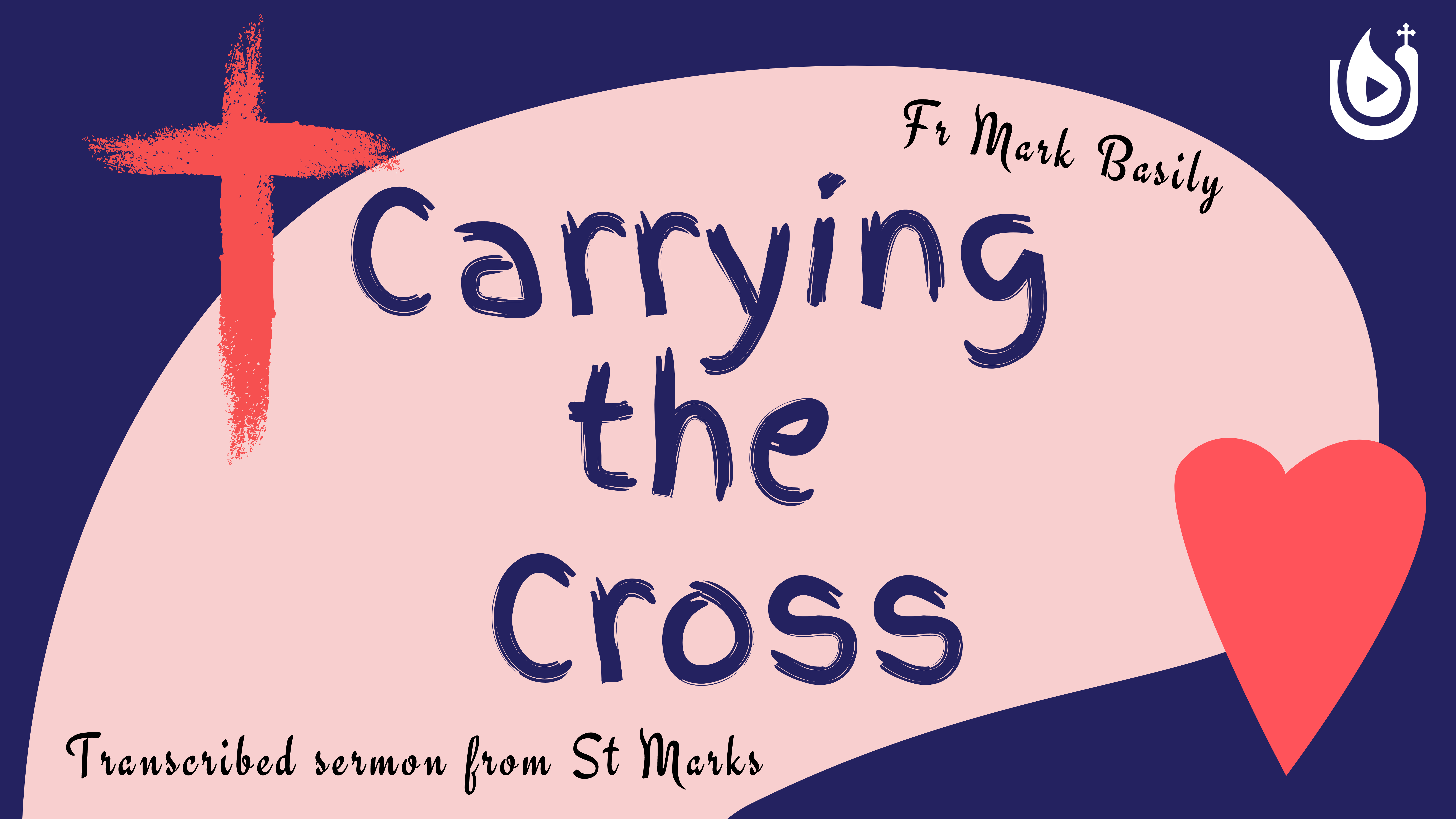Carrying the Cross
adapted from a sermon by Fr Mark Basily
The feast of the Cross is an ancient feast that the church has held for seventeen years.
After Emperor Constantine accepted the Christian faith in the 4th century, his mum, Queen Helena, wanted to protect the Holy sites in Jerusalem. Her method of protecting the Holy sites was to build churches over them.
She went to Jerusalem and identified the place of Christ’s crucifixion and His burial and she built a Cathedral over these holy lands. She invited the Patriarchs of the churches to consecrate the church of the Holy Sepulchre (the church of the Resurrection) and they brought the Cross of Christ.
Amongst them was St Athanasius of Alexandria. This celebrate began of the consecration of the church and the laying of the Cross of Christ was in this church. This marked the feast date of the Cross.
The Cross was once a symbol of torture and the means of execution of the worst criminals in the Roman empire, now it has been adopted as the identity of Christians.
When people see the cassock of Orthodox priests, it can appear off-putting – a very Arab garment. It is only on closer inspection and when the Cross becomes visible, that people are comforted.
As I was walking in the shopping centre, there was a lady coming toward me that appeared afraid but as soon as she saw the Cross, she was reassured. Another lady came and sat next to me and said, “you know I wasn’t going to sit next to you.”
I asked why and she replied, “Only when I saw the Cross did I feel safe enough to sit next to you.”
What is it about the Cross that makes people feel safe and comfortable?
An interaction between Christ and His disciples begins when He asks them the question- “Who do men say that I, the Son of Man, am?” (Matthew 16:13).
Who do people say that I am? What do others think of me?
The disciples respond with a range of names including John the Baptist, Elijah, Jeremiah or one of the prophets.
Christ pushes them asking, “But who do you say that I am?”
Peter responds, “You are the Christ, the Son of the living God.”
Christ being impressed with this answer says, Blessed are you, Simon Bar-Jonah, for flesh and blood has not revealed this to you, but My Father who is in heaven. And I also say to you that you are Peter, and on this rock I will build My church, and the gates of Hades shall not prevail against it. And I will give you the keys of the kingdom of heaven, and whatever you bind on earth will be bound in heaven, and whatever you loose on earth will be loosed in heaven.”
The Catholic and Orthodox churches interpret this response very differently. The Catholic church read that Christ was building the church on Peter; on the person, Peter. Thus, the successor of Peter will always be the head of the church.
The Orthodox church believes that it wasn’t the person of Peter that Christ built the church on but the faith within him. The church is built on the proclamation of faith given by Peter. Faith in Christ, as the Son of the living God, that is the cornerstone of the church.
If you go down a little bit further and the dialogue continues, Christ declares to the disciples that He must suffer and be killed and finally raised. Peter responds, “Far be it from You, Lord; this shall not happen to You!” A natural response to the upcoming ill-events of a loved one.
Christ responds, “Get behind Me, Satan! You are an offense to Me, for you are not mindful of the things of God, but the things of men.”
This is a sharp contract to the praise He gave him just before, calling him the rock on which His church shall be built. Within minutes, He refers to him as Satan.
How did we go from the rock of faith to Satan? The reason we have this shocking response was because Peter did not understand the Cross. Christ was telling them about the Cross to come. Peter could not fathom the Cross and so was, rebuked as Satan. The faith he uttered without understanding or living the Cross was meaningless.
The Cross was central to Christ’s mission, ministry, life and expression of love to the world, and if this cannot be understood, then faith is nothing. Everything was about the Cross.
“If anyone desires to come after Me, let him deny himself, and take up his cross, and follow Me. For whoever desires to save his life will lose it, but whoever loses his life for My sake will find it” (Matthew 16:24). The Cross was not only a part of Christ’s life and ministry, but a requirement for Peter and the disciples understanding. Furthermore, it serves as a constant reminder for us to carry our Cross with Christ. Without the Cross, there is no Christianity, there is no life. This is what makes a Christian- the Cross. Living a life of carrying our Cross with Christ.
Part of our calling as Christians is to carry the Cross, happily, joyfully, faithfully, with Christ. Not only do we carry our Cross but we help others carry their Crosses. The Cross becomes a model of sacrifice, selflessness and love that we bestow upon those around us.
